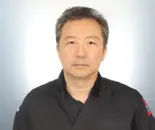Chinese Classes with Native Chinese Tutors
Our Chinese teachers are fully qualified to teach their native tongue. They can train you and, if need be, the rest of your group at a time that is suitable for you, at your home or place of work. Sessions can take place whichever day of the week and whatever time works best, even weekends: whether it be morning, afternoon or evening. If circumstances arise where your home or office is unavailable, these Chinese lessons can be held at your trainer’s office. The teacher will recommend a comprehensive course book to guide you through the lessons.

Reviews Of Our Chinese Courses

I am doing just fine with Ms. Tina's Chinese class.I have chosen Language Trainers as a course provider because I work for the company and I think that it is a good and reliable school.

Thanks for the certificate and the help I have had through the course. Florencia was very helpful and my teacher Peter Chen was lovely to learn from it was truly a pleasant experience not to mention how much confidence I've gained in the language. Thank you very much for such a good course. I may not look to resume now due to personal time constraints but once I have a proper schedule I will look to take on another course so I will definitely reach out.

















